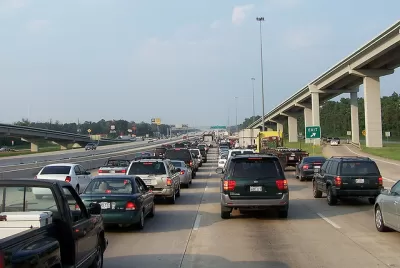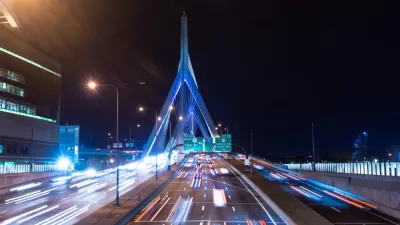The number of "super commuters"—people who commute for over 90 minutes—is still a relatively small percentage of the country, but it's a number that's growing quickly. What does that mean about the economy?

"The number of commuters who travel 90 minutes or more to get to work increased sharply between 2010 and 2015," reports Tim Henderson.
In all but 10 states, the number of “super commuters” increased over the period, and in California, Hawaii, Massachusetts, North Dakota and Rhode Island, it grew by more than 40 percent, according to census data. The growth came amid an overall increase in the number of commuters as the economy improved, but the increase in the number of people with the longest rides, 23 percent, was almost three times the increase in the number of those with shorter commutes, close to 8 percent.
For some insight into the data, Henderson speaks with Mitchell Moss, an urban policy professor at New York University’s Rudin Center for Transportation Policy and Management, Panos Prevedouros, a traffic engineering professor at the University of Hawaii, and David Kack, a program manager for the Western Transportation Institute at Montana State University. Among the culprits for the book in super commutes identified by these sources: the high cost of housing near urban job centers, the rise of telecommuting, and the slow, tenuous recovery from the Great Recession.
FULL STORY: In Most States, a Spike in 'Super Commutes' Over 90 Minutes Long

Planetizen Federal Action Tracker
A weekly monitor of how Trump’s orders and actions are impacting planners and planning in America.

Congressman Proposes Bill to Rename DC Metro “Trump Train”
The Make Autorail Great Again Act would withhold federal funding to the system until the Washington Metropolitan Area Transit Authority (WMATA), rebrands as the Washington Metropolitan Authority for Greater Access (WMAGA).

DARTSpace Platform Streamlines Dallas TOD Application Process
The Dallas transit agency hopes a shorter permitting timeline will boost transit-oriented development around rail stations.

Affordable Housing Finance 101
The financial intricacies involved in building affordable housing can be difficult to understand. This explainer breaks down the foundational concepts.

San Francisco's School District Spent $105M To Build Affordable Housing for Teachers — And That's Just the Beginning
SFUSD joins a growing list of school districts using their land holdings to address housing affordability challenges faced by their own employees.

Car-Centric LA Suburb Looks to a Train-Oriented Future
City leaders in Rancho Cucamonga, the future western terminus of the Brightline West rail line to Las Vegas, want to reimagine the city as a transit-oriented, pedestrian-friendly community.
Urban Design for Planners 1: Software Tools
This six-course series explores essential urban design concepts using open source software and equips planners with the tools they need to participate fully in the urban design process.
Planning for Universal Design
Learn the tools for implementing Universal Design in planning regulations.
Municipality of Princeton
Roanoke Valley-Alleghany Regional Commission
City of Mt Shasta
City of Camden Redevelopment Agency
City of Astoria
Transportation Research & Education Center (TREC) at Portland State University
US High Speed Rail Association
City of Camden Redevelopment Agency
Municipality of Princeton (NJ)





























